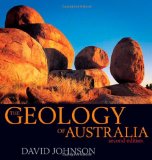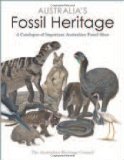Geology of Australia
Australia
- AusIMM - The Australasian Institute of Mining and Metallurgy
- Australian Geological Survey Organisation
- Cenozoic deformation in the Otway Basin, southern Australian margin: implications for the origin and nature of post-breakup compression at rifted margins

- Department of Mineral Resources New South Wales Government
- Dynamic subsidence of Eastern Australia during the Cretaceous

- Early India-Australia spreading history revealed by newly detected Mesozoic magnetic anomalies in the Perth Abyssal Plain

- Field Adventures - Australia
- Full-fit reconstructions of the southern Australian margin and Antarctica – implications for correlating geology between Australia and Antarctica

- Geology of Victoria

- Integrating deep Earth dynamics in paleogeographic reconstructions of Australia

- Mines and Energy South Australia (MESA)
- Newly-recognised Continental Fragments Rifted from the West Australian Margin

- Palaeozoic Palaeomagnetism of South-Eastern Australia: Implications for the APW path of Gondwana

- Petroleum Systems Modelling of the Perth Basin, Western Australia

- Royal Melbourne Institute of Technology, Department of Civil & Geological Engineering
- Riversleigh Society Australian Palaeontology
- Structural Architecture of Australia's Southwest Continental Margin and Implications for Early Cretaceous Basin Evolution

- Tectonic Evolution and Continental Fragmentation of the Southern West Australian Margin

Fiji
New Zealand
- Basin Screening for Seal-rock Quality, New Zealand Region
- Cretaceous and Cenozoic Basin Evolution Based on Decompacted Sediment Thickness from Petroleum Wells around New Zealand
- Department of Geology, University of Otago, New Zealand
- Early Jurassic of New Zealand: Refinements of the Ammonite Biostratigraphy and Palaeobiogeography
- Geology of Basement Rocks in the Southeastern Tararua Range, North Island, New Zealand
- Geology of the Torlesse Supergroup, Southern Tararua Range, North Island, New Zealand
- New Zealand Prehistory and Biogeography
- New Zealand plate tectonic
- Vegetation and climate of the New Zealand Jurassic
Papua New Guinea
Books about Australian geology

